Parabéns!! Que Novas Descobertas Venham!!!
Parabéns!! Que novas descobertas venham!!!
Cassini Mission: What’s Next?
It’s Friday, Sept. 15 and our Cassini mission has officially come to a spectacular end. The final signal from the spacecraft was received here on Earth at 7:55 a.m. EDT after a fateful plunge into Saturn’s atmosphere.

After losing contact with Earth, the spacecraft burned up like a meteor, becoming part of the planet itself.

Although bittersweet, Cassini’s triumphant end is the culmination of a nearly 20-year mission that overflowed with discoveries.
But, what happens now?
Mission Team and Data
Now that the spacecraft is gone, most of the team’s engineers are migrating to other planetary missions, where they will continue to contribute to the work we’re doing to explore our solar system and beyond.

Mission scientists will keep working for the coming years to ensure that we fully understand all of the data acquired during the mission’s Grand Finale. They will carefully calibrate and study all of this data so that it can be entered into the Planetary Data System. From there, it will be accessible to future scientists for years to come.

Even beyond that, the science data will continue to be worked on for decades, possibly more, depending on the research grants that are acquired.
Other team members, some who have spent most of their career working on the Cassini mission, will use this as an opportunity to retire.
Future Missions
In revealing that Enceladus has essentially all the ingredients needed for life, the mission energized a pivot to the exploration of “ocean worlds” that has been sweeping planetary science over the past couple of decades.

Jupiter’s moon Europa has been a prime target for future exploration, and many lessons during Cassini’s mission are being applied in planning our Europa Clipper mission, planned for launch in the 2020s.

The mission will orbit the giant planet, Jupiter, using gravitational assists from large moons to maneuver the spacecraft into repeated close encounters, much as Cassini has used the gravity of Titan to continually shape the spacecraft’s course.
In addition, many engineers and scientists from Cassini are serving on the new Europa Clipper mission and helping to shape its science investigations. For example, several members of the Cassini Ion and Neutral Mass Spectrometer team are developing an extremely sensitive, next-generation version of their instrument for flight on Europa Clipper. What Cassini has learned about flying through the plume of material spraying from Enceladus will be invaluable to Europa Clipper, should plume activity be confirmed on Europa.

In the decades following Cassini, scientists hope to return to the Saturn system to follow up on the mission’s many discoveries. Mission concepts under consideration include robotic explorers to drift on the methane seas of Titan and fly through the Enceladus plume to collect and analyze samples for signs of biology.

Atmospheric probes to all four of the outer planets have long been a priority for the science community, and the most recent recommendations from a group of planetary scientists shows interest in sending such a mission to Saturn. By directly sampling Saturn’s upper atmosphere during its last orbits and final plunge, Cassini is laying the groundwork for an potential Saturn atmospheric probe.

A variety of potential mission concepts are discussed in a recently completed study — including orbiters, flybys and probes that would dive into Uranus’ atmosphere to study its composition. Future missions to the ice giants might explore those worlds using an approach similar to Cassini’s mission.
Learn more about the Cassini mission and its Grand Finale HERE.
Follow the mission on Facebook and Twitter for the latest updates.
Make sure to follow us on Tumblr for your regular dose of space: http://nasa.tumblr.com.
More Posts from Ritasakano and Others
![Ōyō Sketchbook (Ōyō Manga) : [volume 2]](https://64.media.tumblr.com/2be0d25235efd3b81183559baafdf648/cc91cacf939fc5b3-37/s500x750/3de86beba153fbf71fa2470414a6a1498f9221d7.jpg)
![Ōyō Sketchbook (Ōyō Manga) : [volume 2]](https://64.media.tumblr.com/4e243be3bcd4da060ef0607b1ddbe24d/cc91cacf939fc5b3-65/s500x750/28798aafef34362506f52c335948acd4ce7e3366.jpg)
![Ōyō Sketchbook (Ōyō Manga) : [volume 2]](https://64.media.tumblr.com/a5953b6c27468ee286c1801941f5a1af/cc91cacf939fc5b3-c9/s500x750/c0e74bcbc3453fa85d2213bde34e02f2aca89c8c.jpg)
![Ōyō Sketchbook (Ōyō Manga) : [volume 2]](https://64.media.tumblr.com/cba7074669f2049ca99e7d03599b18a9/cc91cacf939fc5b3-77/s500x750/f8008ffcbcb76285709176e0a4c67aa66b9870a5.jpg)
![Ōyō Sketchbook (Ōyō Manga) : [volume 2]](https://64.media.tumblr.com/e8225c7299b978c68567e6a06aca8aec/cc91cacf939fc5b3-82/s500x750/02f357cdf9d732ccbcb6a92e1df1c7538091dfc6.jpg)
![Ōyō Sketchbook (Ōyō Manga) : [volume 2]](https://64.media.tumblr.com/f0a89abd1e301c22cf63388a16666095/cc91cacf939fc5b3-6e/s500x750/ba010fb0503d15aafc4162ec55132be521967d37.jpg)
Ōyō Sketchbook (Ōyō manga) : [volume 2]
Ogino Issui 荻野一水 (Japanese, active 1900-10)
Publisher, Kyoto : Yamada Unsōdō 山田芸艸堂
1903
Metropolitan Museum of Art (New York, N.Y.)
Purchase, Mary and James G. Wallach Foundation Gift, 2013
2013.789a, b
Incomprehensible: The Scale of The Universe
Sutil Harmônia
Assustador!!
How Do Hurricanes Form?
Hurricanes are the most violent storms on Earth. People call these storms by other names, such as typhoons or cyclones, depending on where they occur.

The scientific term for ALL of these storms is tropical cyclone. Only tropical cyclones that form over the Atlantic Ocean or eastern and central Pacific Ocean are called “hurricanes.”

Whatever they are called, tropical cyclones all form the same way.
Tropical cyclones are like giant engines that use warm, moist air as fuel. That is why they form only over warm ocean waters near the equator. This warm, moist air rises and condenses to form clouds and storms.

As this warmer, moister air rises, there’s less air left near the Earth’s surface. Essentially, as this warm air rises, this causes an area of lower air pressure below.

This starts the ‘engine’ of the storm. To fill in the low pressure area, air from surrounding areas with higher air pressure pushes in. That “new” air near the Earth’s surface also gets heated by the warm ocean water so it also gets warmer and moister and then it rises.

As the warm air continues to rise, the surrounding air swirls in to take its place. The whole system of clouds and wind spins and grows, fed by the ocean’s heat and water evaporating from the surface.
As the storm system rotates faster and faster, an eye forms in the center. It is vey calm and clear in the eye, with very low air pressure.

Tropical cyclones usually weaken when they hit land, because they are no longer being “fed” by the energy from the warm ocean waters. However, when they move inland, they can drop many inches of rain causing flooding as well as wind damage before they die out completely.
There are five types, or categories, of hurricanes. The scale of categories is called the Saffir-Simpson Hurricane Scale and they are based on wind speed.

How Does NASA Study Hurricanes?
Our satellites gather information from space that are made into pictures. Some satellite instruments measure cloud and ocean temperatures. Others measure the height of clouds and how fast rain is falling. Still others measure the speed and direction of winds.

We also fly airplanes into and above hurricanes. The instruments aboard planes gather details about the storm. Some parts are too dangerous for people to fly into. To study these parts, we use airplanes that operate without people.
To learn more about how we study hurricanes, visit: https://www.nasa.gov/mission_pages/hurricanes/main/index.html
Make sure to follow us on Tumblr for your regular dose of space: http://nasa.tumblr.com.
Adorei!!


A sushi stitch!
Que trabalho maravilhoso!!


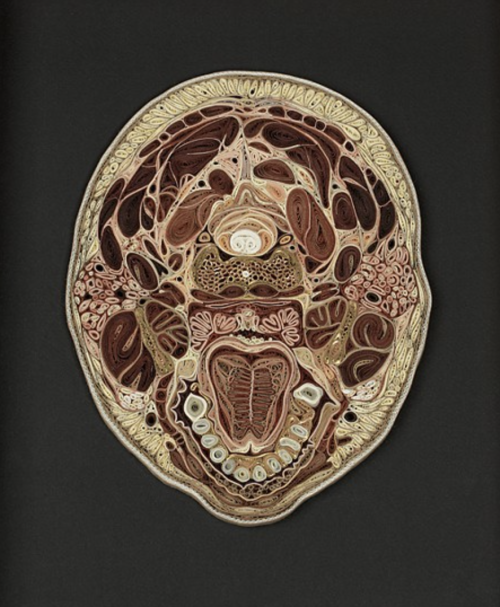

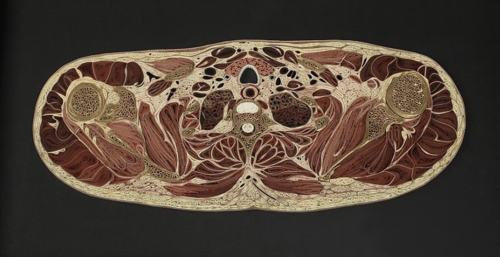
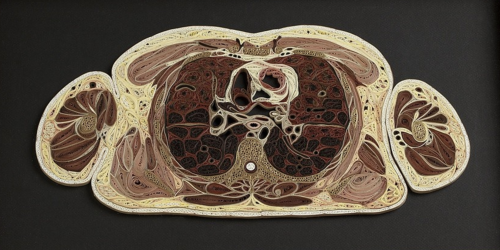
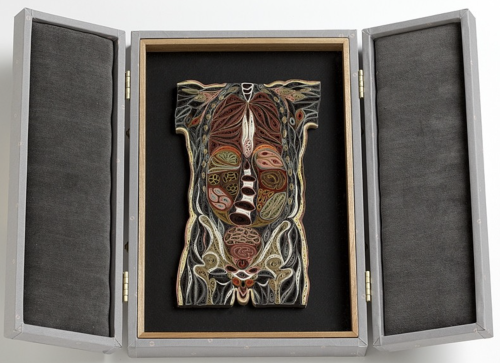

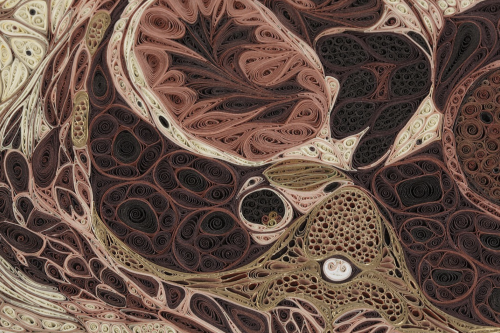

Tissue Series
These pieces are made of Japanese mulberry paper and the gilded edges of old books. They are constructed by a technique of rolling and shaping narrow strips of paper called quilling or paper filigree. Quilling was first practiced by Renaissance nuns and monks who are said to have made artistic use of the gilded edges of worn out bibles, and later by 18th century ladies who made artistic use of lots of free time.
- by Lisa Nilsson
![Cassini: Photos Of Saturn’s Ocean Moon Enceladus, November 26th 2017: [1] [2] [3] [4] [5] [6] [7] [8]](https://64.media.tumblr.com/d9028e2e0d6a044bf7f46486fdbc2594/tumblr_ohedi4ED2U1r4o9aco1_500.jpg)
![Cassini: Photos Of Saturn’s Ocean Moon Enceladus, November 26th 2017: [1] [2] [3] [4] [5] [6] [7] [8]](https://64.media.tumblr.com/efc6e64bcc45405d8a78249cfbf2fbc6/tumblr_ohedi4ED2U1r4o9aco2_500.jpg)
![Cassini: Photos Of Saturn’s Ocean Moon Enceladus, November 26th 2017: [1] [2] [3] [4] [5] [6] [7] [8]](https://64.media.tumblr.com/c1d38d55509e4e92f02a0ce301fec091/tumblr_ohedi4ED2U1r4o9aco3_500.jpg)
![Cassini: Photos Of Saturn’s Ocean Moon Enceladus, November 26th 2017: [1] [2] [3] [4] [5] [6] [7] [8]](https://64.media.tumblr.com/d6bb6e2182bdcba5970b3495999bbe22/tumblr_ohedi4ED2U1r4o9aco4_500.jpg)
![Cassini: Photos Of Saturn’s Ocean Moon Enceladus, November 26th 2017: [1] [2] [3] [4] [5] [6] [7] [8]](https://64.media.tumblr.com/1cd24c66229f48f88a0c733c040a5039/tumblr_ohedi4ED2U1r4o9aco5_500.jpg)
![Cassini: Photos Of Saturn’s Ocean Moon Enceladus, November 26th 2017: [1] [2] [3] [4] [5] [6] [7] [8]](https://64.media.tumblr.com/118dfe8fb64f25a325170b6c9827ebad/tumblr_ohedi4ED2U1r4o9aco6_500.jpg)
![Cassini: Photos Of Saturn’s Ocean Moon Enceladus, November 26th 2017: [1] [2] [3] [4] [5] [6] [7] [8]](https://64.media.tumblr.com/e03ced7a9d7d631f52e7eb0666afa985/tumblr_ohedi4ED2U1r4o9aco7_500.jpg)
![Cassini: Photos Of Saturn’s Ocean Moon Enceladus, November 26th 2017: [1] [2] [3] [4] [5] [6] [7] [8]](https://64.media.tumblr.com/fb8ce11c6553c95ee42c031a63fa8644/tumblr_ohedi4ED2U1r4o9aco8_500.jpg)
Cassini: Photos of Saturn’s ocean moon Enceladus, November 26th 2017: [1] [2] [3] [4] [5] [6] [7] [8] Image Credit: NASA/JPL-Caltech/Space Science Institute
Quando vejo esta linda arte meu coração e razão se enfurece com os professores, pois um dia falaram que os povos africanos não tinham arte e nem história.



Ethiopian magic scrolls.
1. Magic scroll, Ethiopia, Late 19th century
2. Magic scroll, Ethiopia Early 19th century, 2180 x 180 mm
3- Magic scroll of Wälättä-Gabriel, Ethiopia, 19th century
-
 sassyperfectionsandra liked this · 4 months ago
sassyperfectionsandra liked this · 4 months ago -
 wingedstudentkingdom liked this · 1 year ago
wingedstudentkingdom liked this · 1 year ago -
 xtimoleon liked this · 2 years ago
xtimoleon liked this · 2 years ago -
 colorfulsuittree liked this · 2 years ago
colorfulsuittree liked this · 2 years ago -
 rudytazar70 liked this · 2 years ago
rudytazar70 liked this · 2 years ago -
 7thsignpoeticpaperchaser liked this · 3 years ago
7thsignpoeticpaperchaser liked this · 3 years ago -
 cloversposts liked this · 3 years ago
cloversposts liked this · 3 years ago -
 addictsworldsblog liked this · 3 years ago
addictsworldsblog liked this · 3 years ago
